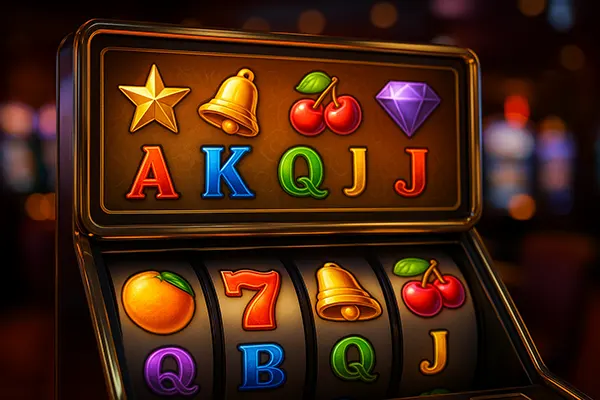
Jackpot Games: Are the Odds Really That Low?
Jackpot games have long captured the attention of players who dream of striking it big with a single spin or ticket. Yet behind the glitter and excitement lies a mathematical reality that most people overlook. In 2025, with progressive jackpots reaching record levels and new regulations reshaping online gambling, it is worth examining whether the odds of winning are truly as small as they seem—or if there is more to the story.
The Mathematics Behind Jackpots
Every jackpot game, whether it is a slot or a lottery draw, operates under fixed mathematical probabilities. These probabilities define the expected return and the size of potential wins. For example, a modern progressive slot often has odds of 1 in 20–50 million for hitting the top prize, depending on the number of players and spin frequency. The concept of randomness, controlled by a Random Number Generator (RNG), ensures fairness but also limits predictability. In other words, each spin is statistically independent, meaning previous results have no influence on future ones.
By 2025, regulatory bodies such as the UK Gambling Commission have tightened their oversight of RNG certification and payout transparency. This has led to more open publication of return-to-player (RTP) rates and jackpot frequency data. Players can now view not only how much a game pays back over time but also how often jackpots are triggered. This improved access to information promotes more informed decisions rather than pure guesswork.
While the mathematics may seem discouraging, it is also what makes jackpots sustainable. Without long odds, the prize pools could not accumulate to life-changing sums. In that sense, understanding the math behind the game is the first step toward responsible gaming and realistic expectations.
Probability vs. Perception
Many players overestimate their chances because of what psychologists call the “availability heuristic.” When someone hears about a recent winner, that story becomes more mentally accessible, creating a false sense of likelihood. In reality, these wins are statistical outliers. The average player is far more likely to experience small wins that maintain engagement rather than the enormous windfalls seen in advertisements.
Developers and regulators are now required to display clearer information about odds and game mechanics to prevent misinformation. This includes detailed RTP percentages, volatility indicators, and even average jackpot cycle lengths. Such transparency is a direct response to consumer protection laws across Europe introduced between 2023 and 2025.
For the player, the key takeaway is that the rarity of big wins does not make the experience less valid—it simply redefines the purpose of play. Entertainment, not guaranteed profit, remains the rational motivation behind any jackpot pursuit.
Technological Advances in 2025
The gambling landscape of 2025 looks very different from that of even a few years ago. Artificial intelligence, blockchain verification, and predictive analytics have transformed how jackpots are monitored and audited. AI now helps detect irregular betting patterns, ensuring that systems remain tamper-proof. Meanwhile, blockchain-based verification provides a transparent ledger of all prize transactions, confirming that each jackpot claim is legitimate and traceable.
These innovations have also improved player confidence. Operators certified by independent auditors now provide real-time tracking of cumulative jackpots. The days of ambiguous “estimated prizes” are largely over. Players can see exactly how much is in the pot and when it last paid out. Such developments have narrowed the trust gap between players and gambling operators.
Nevertheless, technology cannot alter fundamental probability. Even with modern verification and fairness systems, the expected odds of hitting a jackpot remain governed by the same mathematical principles that have always applied. What has changed is visibility, not chance itself.
Progressive Jackpots and Shared Networks
One of the defining features of modern gambling in 2025 is the networked jackpot system. Instead of being limited to a single game or casino, progressive jackpots are now shared across multiple operators. This means the prize pool grows exponentially faster as thousands of players contribute simultaneously.
While shared networks increase the total jackpot size, they also slightly decrease individual winning probabilities due to higher participation. However, for most players, the appeal of a multi-million-pound prize outweighs the drop in odds. This model has made networked slots like Mega Moolah and Wheel of Wishes household names within the gambling community.
Statistical transparency has improved here too: players can track live progress bars, last win dates, and even average cycle durations directly on screen. This access to real-time information reflects a broader shift toward data-driven gambling experiences.

Responsible Play and Realistic Expectations
By acknowledging the statistical nature of jackpots, players can engage with these games more responsibly. The key is understanding that excitement should come from participation, not expectation. Responsible gaming tools introduced in 2024–2025—such as automated spending limits, self-exclusion options, and time-tracking alerts—are now standard in most gambling interfaces.
Moreover, educational initiatives led by organisations like GambleAware and BeGambleAware aim to dispel myths about “lucky streaks” and “hot machines.” These campaigns focus on improving public awareness of randomness and probability to reduce compulsive behaviour. The inclusion of financial health check tools within gambling accounts has also empowered users to control their spending habits more effectively.
Ultimately, jackpot games remain a form of entertainment grounded in statistical uncertainty. Players who view them through this lens are far more likely to enjoy the experience responsibly and sustainably. Understanding that low odds are a feature, not a flaw, helps maintain perspective and enjoyment without risk of disillusionment.
The Future of Jackpot Gaming
Looking ahead, experts predict further integration of artificial intelligence into gambling systems—not just for monitoring, but for personalised responsible play recommendations. AI may soon analyse behaviour patterns and suggest cool-off periods before issues escalate.
There is also ongoing debate about introducing fixed jackpot models with capped odds, designed to provide smaller but more frequent wins. This could appeal to players who prefer consistent engagement over rare, astronomical rewards.
Whether jackpots evolve toward regulation-friendly models or remain massive global networks, one fact remains unchanged: the allure of the big win continues to fascinate millions, even when the odds stay incredibly slim. What matters most is that today’s players are better informed than ever before—and in 2025, that knowledge is their most valuable asset.
Popular
-
How to Evaluate Slot Risk Level Using the ...
Understanding the risk profile of a slot …

-
Blockchain’s Influence on Transparency in ...
Blockchain has become one of the most …

-
Jackpot Games: Are the Odds Really That Low?
Jackpot games have long captured the attention …

